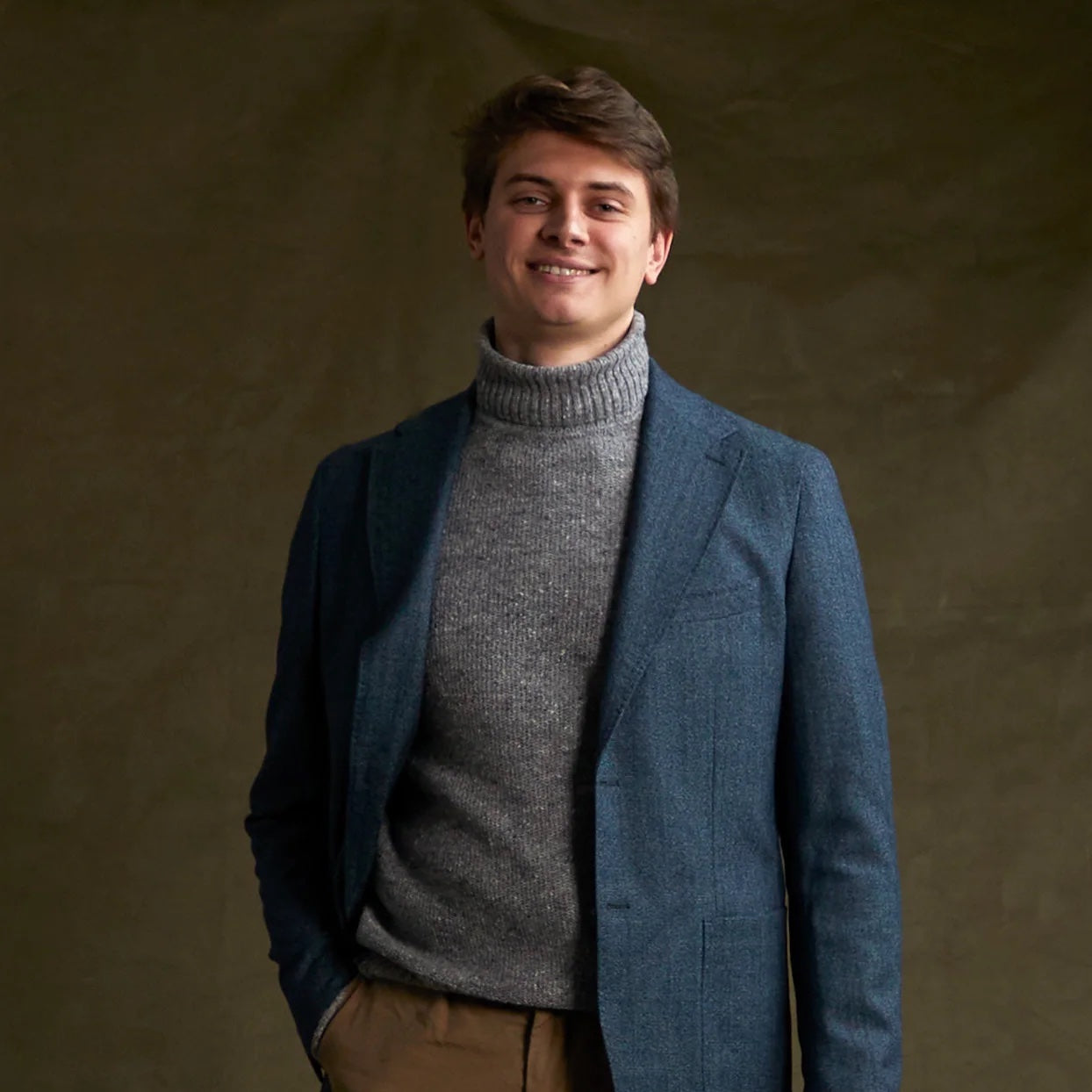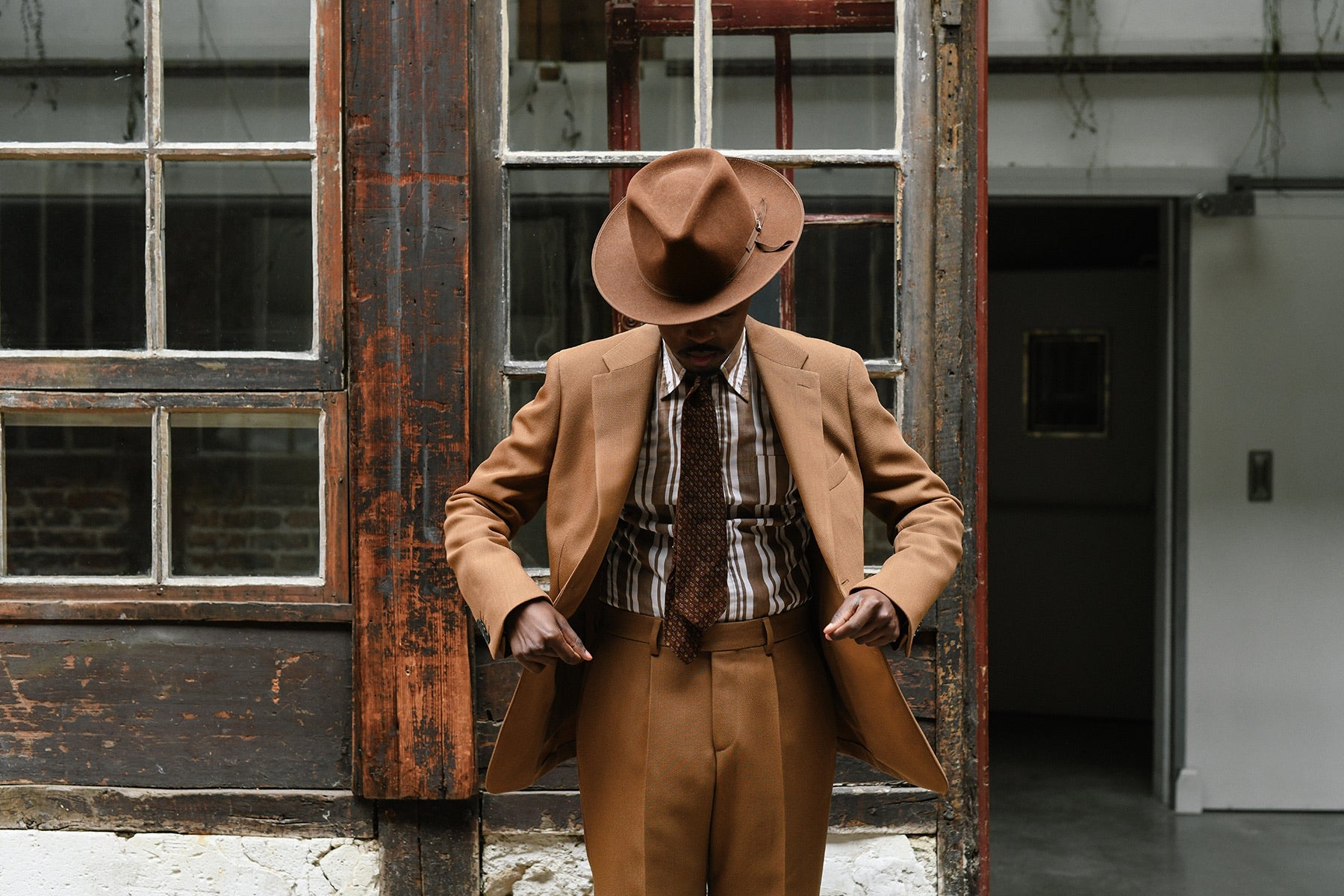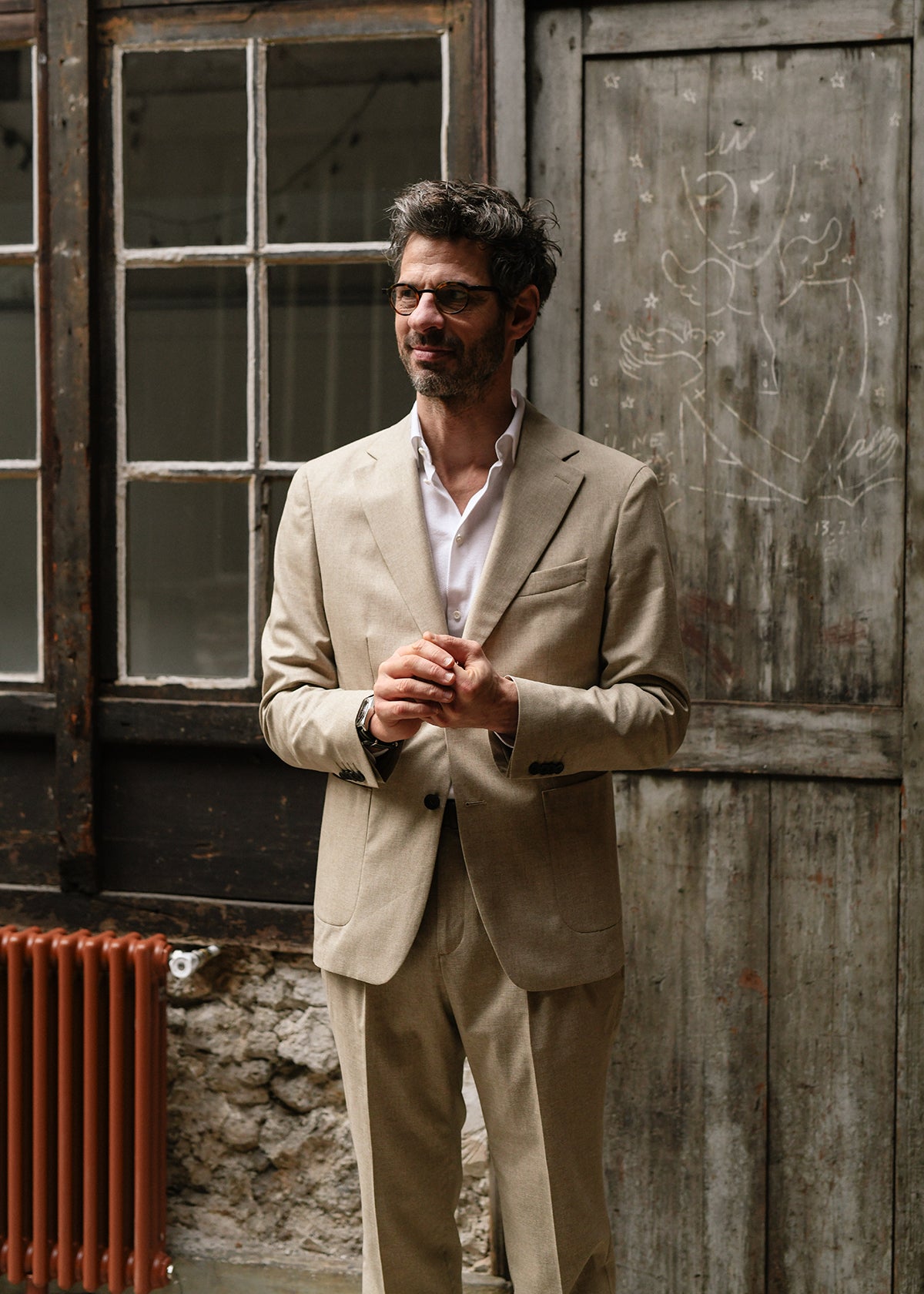There are the models that we see.
And there are those whose existence we simply ignore, even though they are just as important .
They are lucky to have a body shape that corresponds to the standard size of a brand.
Far from the spotlight, they work in the shadows to allow creators to refine their pieces before launching production , before then finding themselves on our legs or our shoulders.
These shadow mannequins are the “ cabin mannequins ”.
As mentioned by Benoît in his last annual report , we have been working since the end of 2022 with cabin models who have helped us review and harmonize our cuts.
Help from “everyman” to create a collection
The cabin is a world apart, like theater boxes, it has its armchairs, its lamps and its mirrors. Like the lodges, it is a little sordid. Like the lodges, it is only inhabited by fairies.
What is a mannequin cabin? What is it used for ?
The first time I heard the term was one afternoon at the office. I've barely passed the front door when Landry, our (former) product technician, comes rushing in saying "Séb, I need your body. You need to put on some clothes so I can do it rectifications". So I improvised as a model for an hour.
But it's not my job to be a model.
The term “booth” refers to all the models who work internally for a brand and who help develop the clothes. These models are not visible to the general public.
The production booth mannequin has a determining role in the making of the collections. It must have a very specific morphology which will serve as a standard for the brand .
It is selected because of its measurements which allow the creative team to standardize the pieces : we try to get as close as possible to the universal size defined beforehand (I will come back to this notion a little later), with the aim of that the clothes then go to as many people as possible.
In fact, it is on him that the final adjustments to the product are made before marketing .
Note :
We distinguish between collection booth mannequins and production booth mannequins. The first are in a way the understudies of the fashion show models, their measurements being close to the latter. But they are specific to fashion houses.
Since BonneGueule is not a fashion house, we only work with production models.

Here for example, the fitting on our mannequin (cabin) led us to ask to widen the sleeve width by 1cm on our Lofoten parka.
How do they intervene?
They intervene at the request of the creative department of a brand, after the final prototypes have been validated and before the launch of production of the collection. The pieces are therefore confirmed, we are just trying to fine-tune their cuts and the last details .
It is on him that the “standard” measures will be taken. The measurements are validated on a mannequin that is a size M, then the creative team carries out a (de)gradation which corresponds to the different clothing sizes (S, L, XL, etc.).
For many, it is a full-time job: they most often work for specialized agencies and collaborate with different brands with varied universes.
This mannequin is therefore never exposed to the public.
A “universal” size
Concerning this notion of “universal size”, our editor friend Michel detailed it in this article how brands define sizes .
Basically, brands establish size grids which they will then apply to the nearest centimeter between each clothing size and a range of human body measurements.

© Photo credit: Textilemerchandising.com
And to design these grids, they can rely on:
- Statistical information
- Providers
Other brands - Collecting customer reviews
- The clothes themselves
- Experts, whether stylists or models
- Marketing, and more precisely its brand identity.
At BonneGueule, we rely on customer feedback, but above all on “experts”. And that’s where our booth mannequins come in !
It is not always easy for a brand's creative team to find the ideal, “all-purpose” profile that always corresponds to the artistic direction taken for the garment to be tried on. A casting is therefore necessary to find the ideal model! It's all about the style you want to give to the garment.
What measurements do you need to be a true “size M”, for example?
We select a person who will serve as the basis for sizing, generally an M. The product team then grades the sizes from there.
At BonneGueule, we have been working with Gaël for almost a year. He has the ideal measurements which correspond to the M found in
- Height: 180cm
- Chest circumference (at the strongest point): 97cm
- Waist circumference (at the height of the navel): 80cm
- Pelvic circumference (at the strongest point): 95cm
- Neckline circumference (from the base of the neck to the armhole): 39.5 cm
Its morphology is the standard of the vast majority of brands. And this, even if the measurements from one garment to another may vary depending on the material used.
In the life of a production booth model
And so, how is the life of such a person who lives in the shadow of the podium?
You need both physical and moral qualities:
- Availability: you must be able to respond as soon as a brand requests it;
- Don't be touchy: the creative team can debate the silhouette that the garment will bring, ignoring the model;
- Endurance: he runs everywhere, and sometimes stands still for long minutes;
- Obviously, keep your figure, a stable physique. You need precise measurements to match the size of the brand;
- Rigor and discretion, since they work on confidential documents.
Gaël came for example on a Monday morning, during a very tight time slot: from 9:50 a.m. to 10:50 a.m. Not another minute since he had other fittings to do during the day.
He changed as soon as he arrived to try on pieces from one of our soon-to-be collections, which included:
- A double-breasted seersucker suit jacket;
- The pants that went with it;
- New jeans;
- New pants;
- A summer jacket.
As for the team, they ensure that the pieces worn hang.
Here, Anna, our product technician, takes measurements on the lapel of the jacket, which will be off by a few centimeters.
Each test is interspersed with comments and corrections to be made to the part, which will then be sent to the suppliers.
I didn't specify it, but he doesn't just try on the pieces that are presented to him. He also gives feedback to the team on wearing the clothing: is it too tight? too loose? Can he easily raise his arm or bend his leg without being blocked by clothing?
Their feelings are taken into account by the team to improve the piece as best as possible, which will subsequently be worn by hundreds of people, of different sizes and builds.
The corrections that the creative team wants to make are represented by very distinct red threads.
In an ideal case, a real bond is created between the model and the team, which can help facilitate product development.
What has changed at BonneGueule since we called on him
Our co-founder Benoit mentioned our changes in fits in his traditional annual review .
It was a big underwater project: we took back almost all of our fits. Sometimes we didn't change much, sometimes we went more frankly. And for that, we (finally) called on a cabin model.
Having the same person try our clothes on allowed us to review the entire sizing of our clothes and ultimately, to standardize our cuts. History of creating real clothes with fixed and stable sizes .
Clothes that can fit better, on more people.
We tended to offer clothes whose sizes were sometimes tighter than expected, therefore sometimes finding ourselves between two sizes and for which we had to make a compromise: a tight M or an (too) loose L?
Before calling on him, the members of the team served as guinea pigs depending on the room and the result we wanted to have. But it was at the risk of having less “authentic” sizes.
Hence the interest of having done this passage with cabin mannequins!
I hope to have taught you something about this little-known profession, as well as the behind-the-scenes of clothing making. If you have any questions or comments, don't hesitate to leave a comment!






